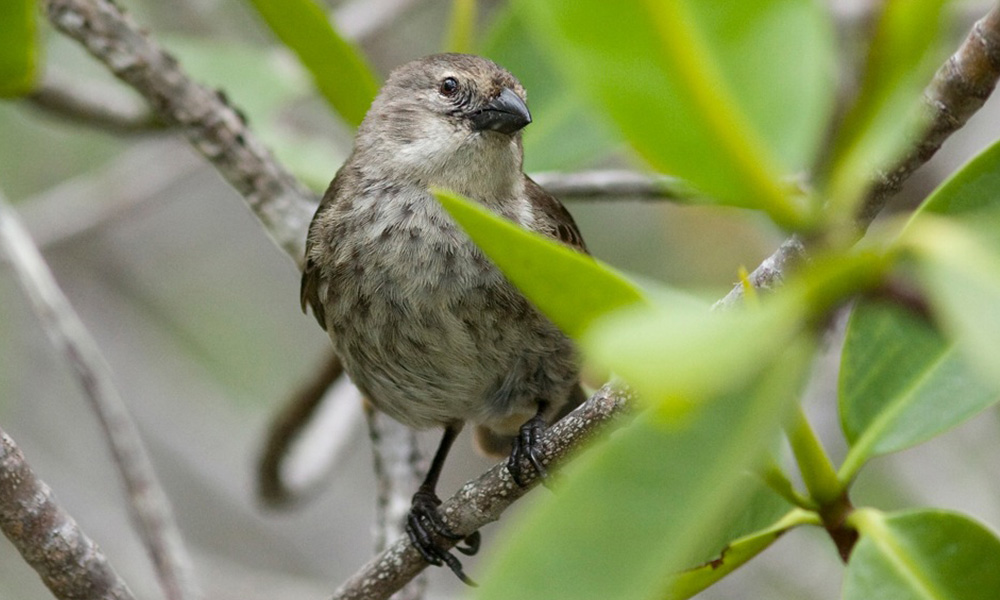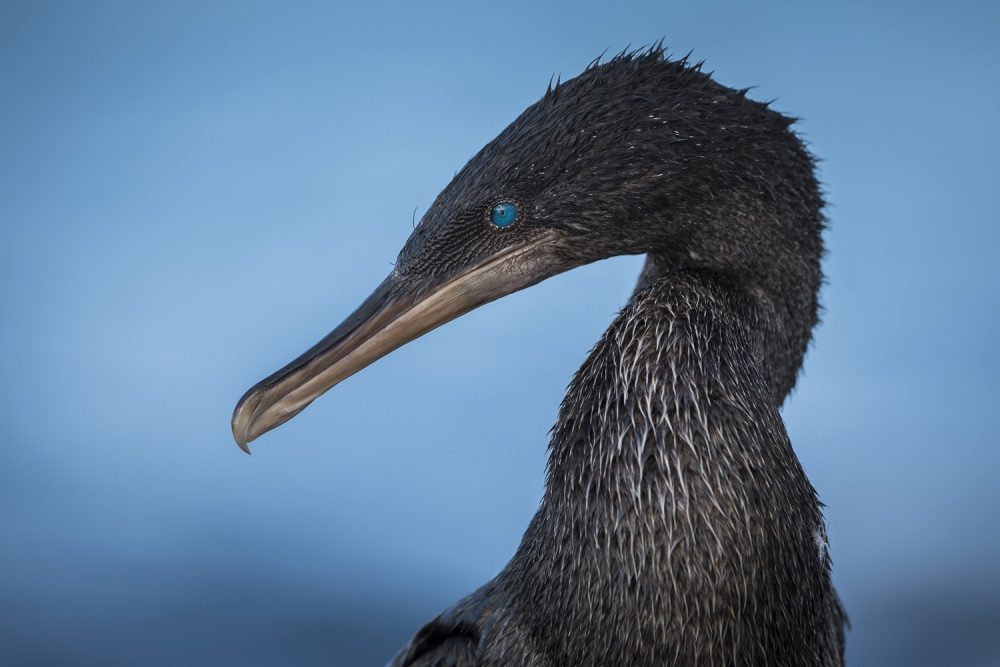
GCT’s 25th Anniversary Blog Series – Part 2
This year, Galapagos Conservation Trust (GCT) celebrated its 25th anniversary. Here is the second blog from our three part interview series.
This year, Galapagos Conservation Trust (GCT) celebrated its 25th anniversary. To mark this historic occasion, we decided to ask some of our founders, ex-trustees and partners, as well as long-term members, supporters and volunteers about their experiences of GCT, the Islands and to get their thoughts on their hopes for GCT in the future. Below you can find part two of our interview series.
- When did you first start working in Galapagos and what sort of work were you doing?
Anne Guezou, GCT’s Education and Outreach Coordinator:
I started working right after the naturalist guide course led by the Galapagos National Park Directorate in October 1989, as a guide for groups of tourists on boats. Thanks to my two years guiding, I got to know most of the visitor sites of the Archipelago and was able to get decent overall knowledge of the natural and human sides of Galapagos. I later worked for ten years as a volunteer and then a research assistant for the Charles Darwin Foundation Botany Department.
- What projects/area of work have you been most interested in or concerned about?
Julian Fitter, GCT’s Inaugural Chair:
The conservation of Galapagos is itself a project, and I think that it is important that we don’t look on the Archipelago as an amazing zoo and put a fence around it. If we are to succeed, we need to bring people into the equation. Developing tourism has certainly been beneficial for Galapagos, in general terms, but also brings problems with it. I think, however, the management of tourism by the Galapagos National Park Directorate has been amazingly effective. Quite what the impact of COVID will be in the longer term is hard to see, but we need to be looking for other ways to develop sustainable, environmentally-friendly economic activities so that the people of the Islands continue to buy into the protection of the wildlife. If locals support the cause, we might succeed, but if they do not, we will surely fail.
Gillian Green, Ex-Trustee and member of GCT:
I am most interested in addressing invasive species. It is difficult and complex but incredibly important. GCT has supported work on Philornis from early on, both long-term research on the parasite and possible controls, and the shorter-term treatment of nests and ‘head-starting’ with mangrove finch chicks. Blackberry control is another big issue, and here progress has been slow. It is harder to get people excited about it, but it is a serious ecological concern.

The Mangrove Finch Project is working tirelessly to save Galapagos’ most endangered bird species from the threat of the invasive fly, Philornis downsi © Michael Dvorak
Richard Robinson, Ex-Chair and Ex-Trustee of GCT:
The Floreana mockingbird (Mimus trifasciatus) must be one of the most important species in the history of science. When I was Chair of GCT in 2008, we started to raise the possibility of reintroduction to the main island of Floreana from the only surviving populations on the islets of Gardner and Champion. This is the bird that, when compared to other Galapagos mockingbirds, put Charles Darwin on the trail of evolution by natural selection. The specimens he collected and compared are still held by the Natural History Museum in the UK. We, inspired by Felipe Cruz, started to talk about their reintroduction onto the main island of Floreana, a project which is still progressing and has developed into the scheme to restore the whole island. I have sat in a small boat off Champion, with Felipe, watching the birds fly unconcernedly overhead. I am very privileged.
- What is your standout memory of the Islands/GCT?
Richard Robinson, Ex-Chair and Ex-Trustee of GCT:
When our boat eventually arrived at Puerto Baquerizo Moreno, after a long wait happily watching boobies and marine iguanas, we set off for our adventure. Only after two days of not meeting up with the other half of our group did we realise that we had been ‘kidnapped’ by our local guide, who wanted to show us Galapagos his way without being told what to do by an English tour leader! In those days, communications were infrequent, and we were regarded as lost. All ended happily!
- If you have been to any GCT events, which ones have you enjoyed the most?
Alan Chapman, GCT Guardian member and long-term volunteer:
I always enjoy attending Galapagos Day and hearing about the progress with GCT-supported projects and other developments in the Galapagos.
Akemi Yokoyama, GCT member and long-term volunteer:
It has to be the dinner that took place in the late 1990s in the newly opened Earth Hall at the Natural History Museum. I was sitting right behind Sir David Attenborough – I was starstruck.
Richard Robinson, Ex-Chair and Ex-Trustee of GCT:
GCT does events well. I was honoured to be on the top table at Christ’s College, Cambridge for a fundraising evening to celebrate Darwin’s 200th anniversary, with HRH The Duke of Edinburgh, Sir David Attenborough and Felipe Cruz. The discussion session will always remain in my mind.
I also met HRH Prince Charles on the Islands while I was representing GCT. He was interested and supportive. Being Galapagos, we met four times in one day. At the evening reception, he said: “You must be sick of the sight of me!”. The headline on The Sun website was “Prince Ogles Boobies”!
- What Galapagos species are you particularly fond of?
Alan Chapman, GCT Guardian member and long-term volunteer:
After seeing the wonderful video of a whale shark at the recent Galapagos Day webinar webinar, this species is a particular favourite. I also remember the great variety of birdlife, 33 species having been ticked off in my travel guide, including blue-footed boobies, flightless cormorants spreading their wings to dry in the sun, frigatebirds with their red pouches, vermilion flycatchers, and waved albatrosses.

Our Galapagos Day 2020 webinar included incredible footage filmed by Jonathan Green, founder of the Galapagos Whale Shark Project, showing their recent research trip to tag and track these mysterious giants © Simon Pierce
Diana Alexandra Pazmiño Jaramillo, Galapagos Science Center and GCT’s Connecting With Nature Programme:
Although I study sharks and rays, I also have a special interest in herpetology, and lava lizards are a definite favourite.
Gillian Green, Ex-Trustee and member of GCT:
My favourite species is the flightless cormorant. In 1989, on my first trip, we didn’t see any – Fernandina was too far for our low-powered boat. So I was delighted when I saw them ‘for real’ in 2004, and they were everything I had hoped for – and more. There is something about their beautifully curved necks….

The flightless cormorant is the world’s only flightless cormorant species, and is an iconic Galapagos species © Marek Jackowski
Richard Robinson, Ex-Chair and Ex-Trustee of GCT:
The San Cristobal Vermillion Flycatcher – a lesson for us all.
The Floreana Mockingbird – an inspiration for us all.
Ways to get involved
In our 25th year, the conservation of the Islands has never been more vital, as this unique Archipelago faces pressures from invasive species, plastic pollution, overfishing, climate change and habitat degradation. Why not become a member today for as little as £3 a month, and help to preserve these Islands for years to come? Or head over to our shop to purchase a Galapagos themed gift.

